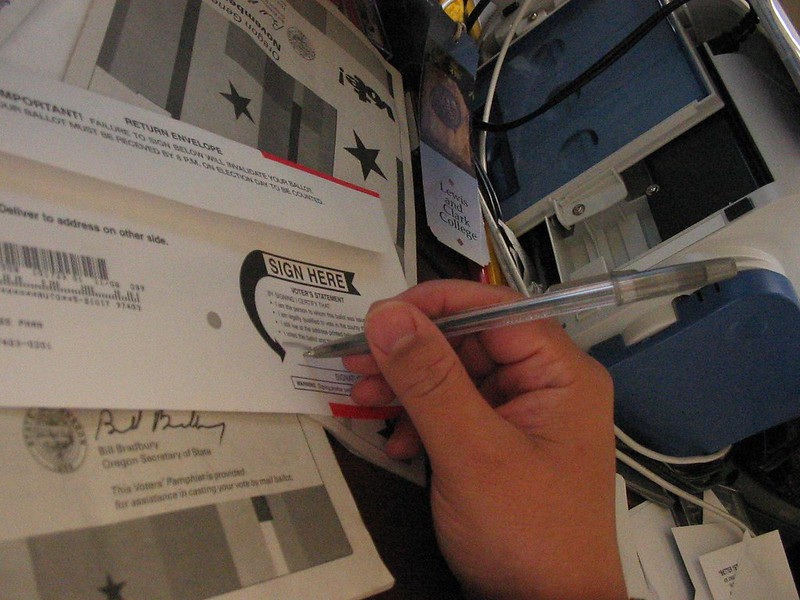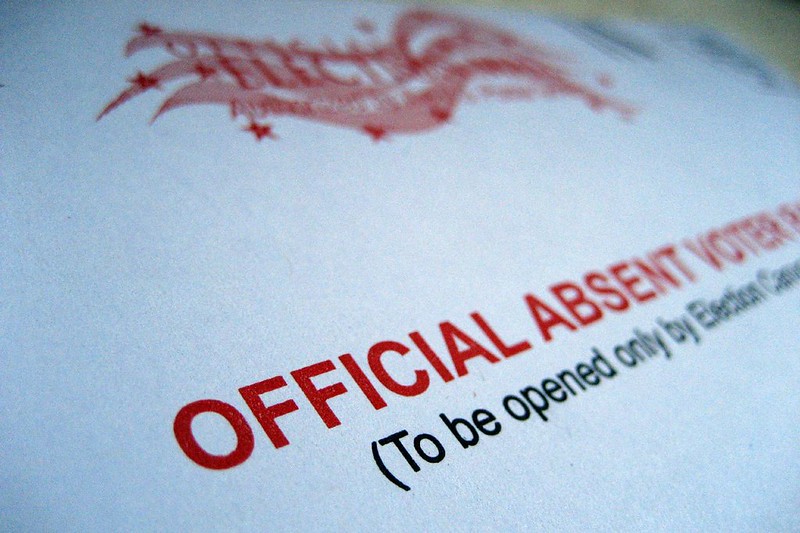This post originally appeared on the Brennan Center for Justice. It has been republished with permission.

As the coronavirus ravages the country, presidential primary elections have been among the casualties. At least 16 states have already delayed some elections or allowed citizens to vote by mail with extended deadlines.
The latter move has helped renew a contentious debate in Washington, DC, and across the country: Should a vote-by-mail option be widely available in all states before the 2020 presidential election to help protect voters and poll workers from COVID-19?
Many state and local election officials of both parties believe it should.
President Trump warned that these changes would lead to “levels of voting” that would hurt him and his party—even though Republicans have long supported the option.
Recognizing that argument could not be sustained publicly, the president now worries about fraud, claiming “a lot of people cheat with mail in voting.”
In fact, much of the country votes by mail already. (Indeed, so does President Trump, who votes by absentee ballot.)
There is ample experience to show that a vote-by-mail option is safe and gives citizens the ability to participate.
More broadly, the coronavirus has given us no choice. If we want to have an election that is free, fair, secure and safe, we must have the option for people to vote by mail in November.
Why Is Vote by Mail Necessary?
The coronavirus has made congregating in small, enclosed spaces dangerous.
At many polling places, voters—particularly of color and from poorer communities—already wait in long, crowded lines to vote. During a pandemic, such lines would force citizens to choose between their health and their right to vote.
We must be able to run a free, fair and safe election in November. Dr. Anthony Fauci, director of the National Institute of Allergy and Infectious Diseases, has already warned that the virus will almost certainly “strike again” this fall. That makes vote by mail an essential way for voters to stay safe while exercising their right to choose who governs them.
To ignore—even block—a solution that maintains our electoral system would be democratic malpractice.
The nation already had a preview of what an election should not look like under pandemic conditions in Wisconsin’s April 7 presidential primary: A critical shortage of poll workers. Shuttered polling locations. Long lines made even longer because of social distancing. People in protective masks. Members of the National Guard staffing the remaining polling stations.
To make sure that vote by mail and other critical capacity-building can be implemented in time for November, we have to start putting new processes in place now.
Unlike primaries, the general election can’t be moved. That’s why the Brennan Center has asked Congress to provide at least $2 billion for states to use in this fight. Those funds will enable states to protect election integrity in November.
Since our country’s founding, neither war nor pestilence has ever prevented Americans from voting. We can’t let the coronavirus break that streak.
Isn’t Vote by Mail a Radical Departure From How U.S. Elections Are Conducted?

Much of the country now votes by mail. It’s already deeply embedded into the American electoral system.
Twenty-three percent of ballots were cast by mail in 2016, and twenty-six percent of ballots were cast by mail in 2018.
Five states—Hawaii, Utah, Oregon, Washington and Colorado—will run all-mail elections this year.
And in 28 states and the District of Columbia, any voter has the right to request a mail ballot without excuse in November. Some of these—like California—are big states that have made vote-by-mail a core way they run elections.
Many more states have a vote-by-mail option—but they are ill-equipped to handle the significant increase in the number of ballots that would come in amid the pandemic. They need, first and foremost, funds from the federal government.
Currently, 17 states—including Alabama, New York, and New Hampshire—need to change their policies to guarantee that all who want to vote by mail in November can.
Restricting who can vote by mail this year at best makes voting unnecessarily difficult, and at worst puts their citizens at unnecessary risk of catching the coronavirus. If these states are to provide all voters a vote-by-mail option before the November election, they must start preparations now.
Won’t Fraud Discredit Elections Where Vote by Mail Is Widespread?
No. There is no evidence that voting by mail results in significant fraud. As with in-person voting, the threat is infinitesimally small.
As Sen. Michael Bennet of Colorado reminded President Trump after he opposed vote by mail on fraud grounds, “Mr. President, we’ve had vote by mail in Colorado for years. We don’t have fraud. But we do have the second highest turnout in America.”
What Security Measures Can Be Taken to Protect Against Vote-By-Mail Fraud?
There are many.
The ballot envelope itself can be designed to prevent fraud. Voters have to sign the envelope, and that signature can be compared to the one that’s already on file for the voter. It’s important to note, though, that there are best and worst practices with signature matching.
When done incorrectly, it can disenfranchise eligible voters. Done correctly—which includes a review by a bipartisan group of election officials—it can be an effective deterrent for fraud.
States can also track ballots in transit. Much like a FedEx package, the ballot comes with a barcode that allows election officials and voters to track where the ballot is throughout the process.
Most people who vote this way, however, do not send in ballots by mail. Instead, they drop them off at secure government offices or other locations.
According to MIT’s election lab, in 2016:
73% of voters in Colorado, 59% in Oregon and 65% in Washington returned their ballots to some physical location such as a drop box or local election office. Even among those who returned their ballots by mail in these states, 47% dropped off their ballot at a U.S. Post Office or neighborhood mailbox rather than having their own postal worker pick it up at home.
These drop boxes can be made more secure with cameras or other security measures.
Finally, post-election audits can identify any irregularities that may remain. In 2018, a congressional election in North Carolina was marred by absentee ballot misconduct by a Republican political operative, requiring a revote. That misconduct was caught by a state post-election investigation.
Is Universal Vote by Mail the Solution for the 2020 Election?
Even if it were a good idea, voting only by mail in 2020 would be impossible to implement it in such a short time.
Fully participatory elections in many states will require ample in-person voting opportunities. At a time of pandemic, that means adequate early voting so that people do not crowd polling places on Election Day.
Moreover, some communities don’t have reliable access to the mail. Many Native American reservations, for example, don’t have addresses recognized by the U.S. Postal Service and therefore residents must rely on P.O. boxes far from their homes for mail.
Some voters also rely on assistance—whether it’s translation or specially designed machines for those with disabilities—to cast their ballots.
The goal for every member of Congress, every state legislature, and every election official should be simple: ensure that anyone who has the right to vote can exercise that right as simply and safely as possible.
This shouldn’t be a partisan issue but a patriotic duty. Vote by mail is just one option among many to accomplish that goal.
The coronavirus pandemic and the response by federal, state and local authorities is fast-moving.
During this time, Ms. is keeping a focus on aspects of the crisis—especially as it impacts women and their families—often not reported by mainstream media.
If you found this article helpful, please consider supporting our independent reporting and truth-telling for as little as $5 per month.





